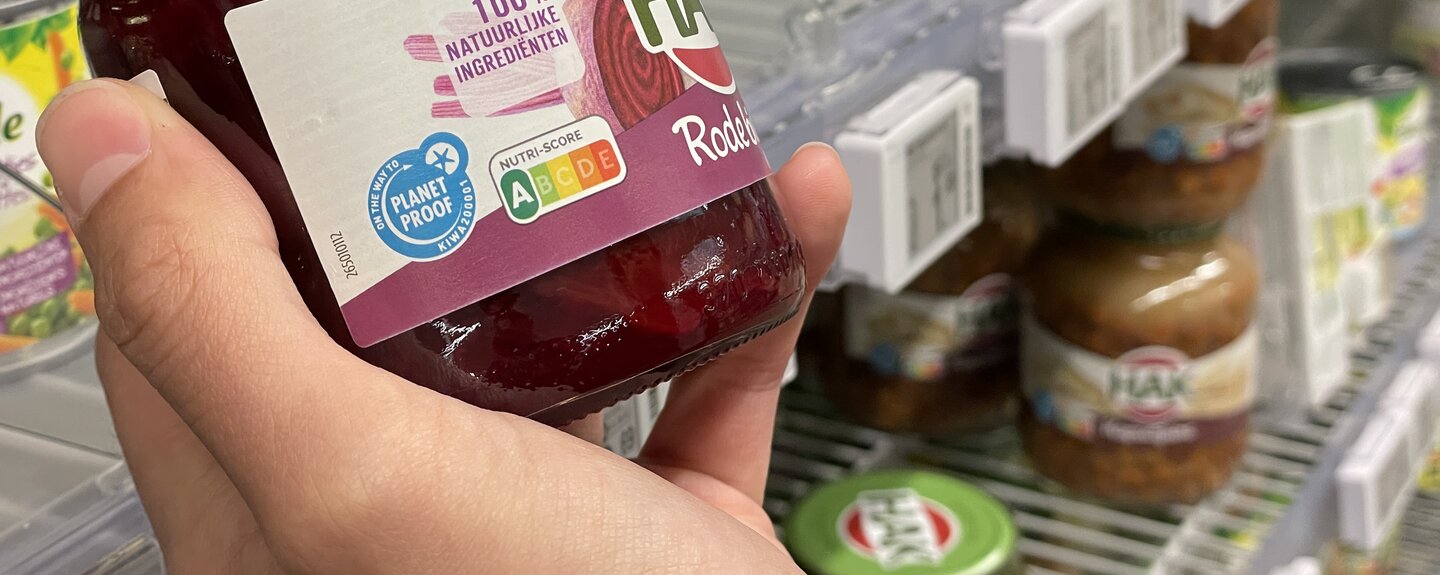Implementation of Nutri-Score; a motivator for product improvement
Nutri-Score is the food choice label in the Netherlands as of January 1st. Several countries, including Germany, France, Belgium, Luxembourg, and Switzerland, have already chosen to adopt Nutri-Score. Nutri-Score is unique because it is determined in a fully transparent and scientific manner. The label helps consumers select products with better nutritional value and also serves as a motivator for product improvement. We already observe that many companies and retailers are actively working to achieve a higher Nutri-Score wherever possible.
What makes Nutri-Score a unique label?
The uniqueness of Nutri-Score is that it is scientific based, fully transparent and it is displayed on the front of the packaging. The goal of the label is to encourage consumers to make better choices within a product category.
Nutri-Score is a traffic light system with five levels (A to E). The score of a product is based on the nutritional table and ingredient list on the packaging. Products receive negative points for the use of calories, sugar, saturated fat, and salt and positive points for the use of protein, fiber, fruit, vegetables, legumes, and nuts. The total score determines whether the product receives an A (preferred choice), B, C, D, or E (option to avoid) score.
Front-runners
Various producers and retailers had already embraced the label even before the government officially decided to implement it. For example, vegetable manufacturer HAK decided back in 2019 to take the initiative themselves, becoming the first manufacturer in the Netherlands to introduce the label on their products. Another example is PLUS Supermarkt, which has been placing the label on the shelf labels of more than 3000 own-brand products since 2022.
Consequently, Nutri-Score was already present on various products before January 1st, based on the original calculation method. A transition period has been set for these products. This means that during this period, we will encounter both old and new Nutri-Scores on packaging.
Potential
Nutri-Score is a valuable addition to existing nutritional guidance. I anticipate that Nutri-Score will assist consumers in making better choices, as it makes the compositions of products easier to compare. For products outside the official dietary guidelines, Nutri-Score is even the primary tool for easily comparing products with each other. These are products such as sauces, soft drinks, cookies, pizzas, and snacks. Changing food behavior is complex. However, recent scientific research had promising outcomes on the effect of Nutri-Score as intervention to nudge towards healthier choices.
Not only does Nutri-Score have the potential to influence choices, but it also motivates companies to improve their products. They can achieve a higher Nutri-Score, for instance, by reducing sugar or salt or by adding vegetables. We already observe that (behind the scenes), many companies and retailers are actively working on product improvement to achieve a higher Nutri-Score wherever possible. So, as much as 90% of the complete meals within the own-brand assortment of PLUS Supermarkt score a Nutri-Score A or B. Setting goals aimed at a high Nutri-Score is becoming increasingly common.











